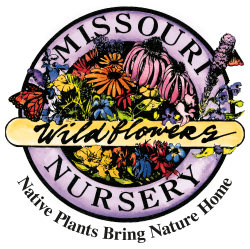Common elderberry is prized for its edible flowers and berries that can be processed into wines, jams, jellies, and pies. Large, white, fragrant flower clusters appear in early summer and are visited by numerous pollen-seeking insects. The berries can be eaten raw in small quanities or left for the birds that will eagerly gobble them up. It can spread by root suckers, so isn't ideal for small gardens or most formal flower beds, though it could be used as a hedge. While it can tolerate dry conditions, it will be much happier in rich, moist soil.
Uses: Edible, bees, hummingbirds, wildlife, rain gardens
Bloom time: June - July
Height: 6 to 10 feet
Space: 6 to 8 feet
Sun: Full sun to light shade
Moisture: Dry to moist





